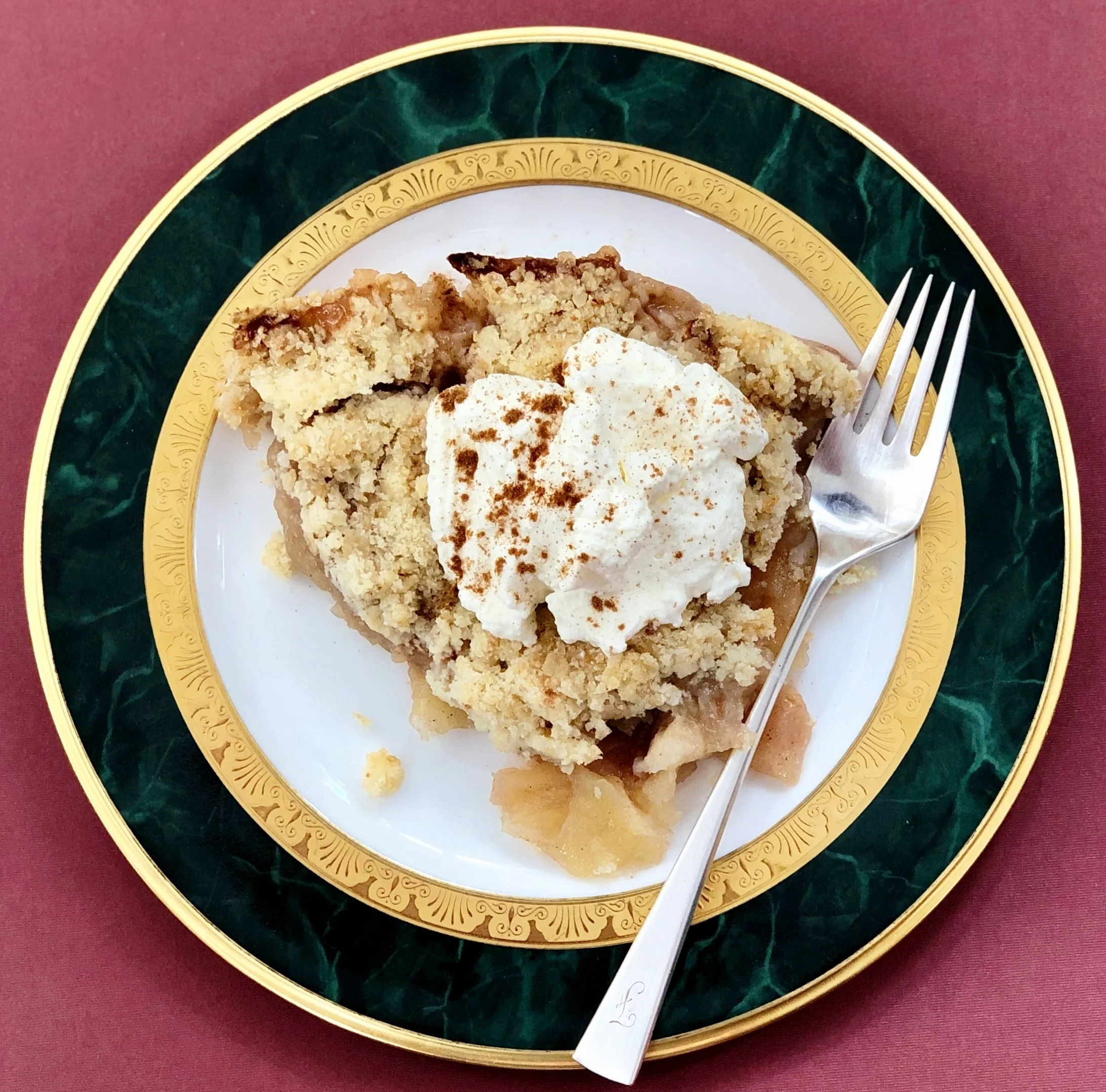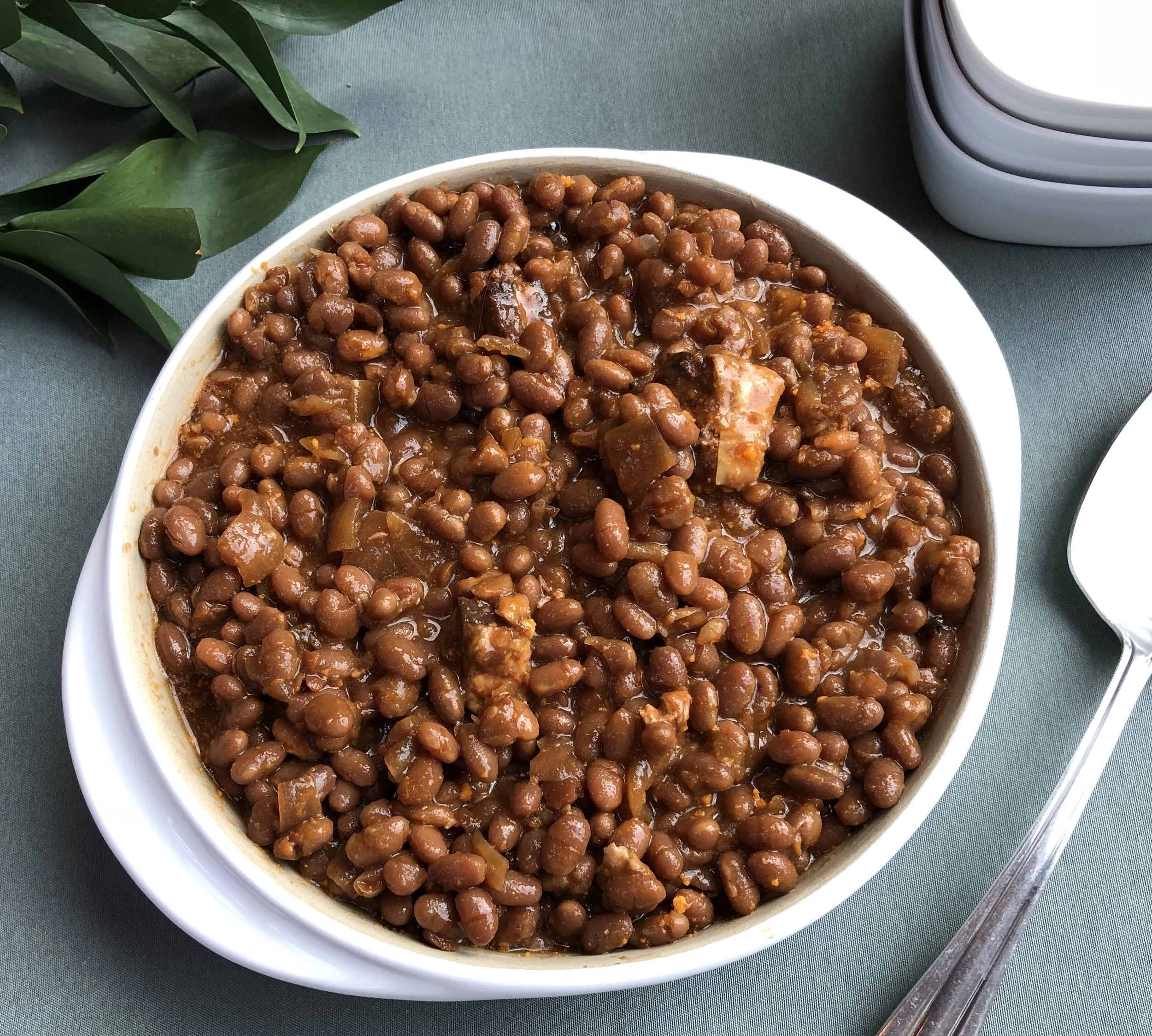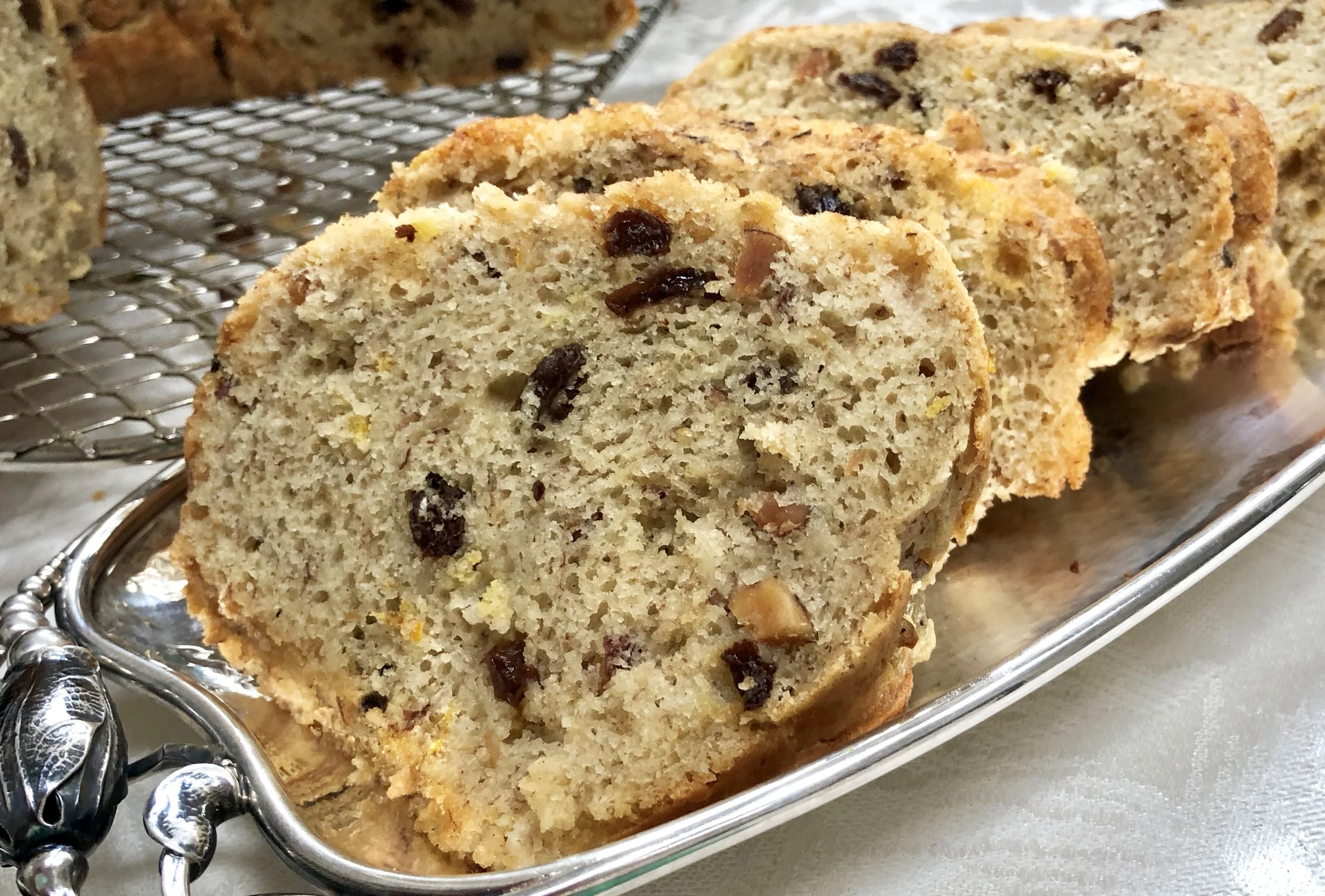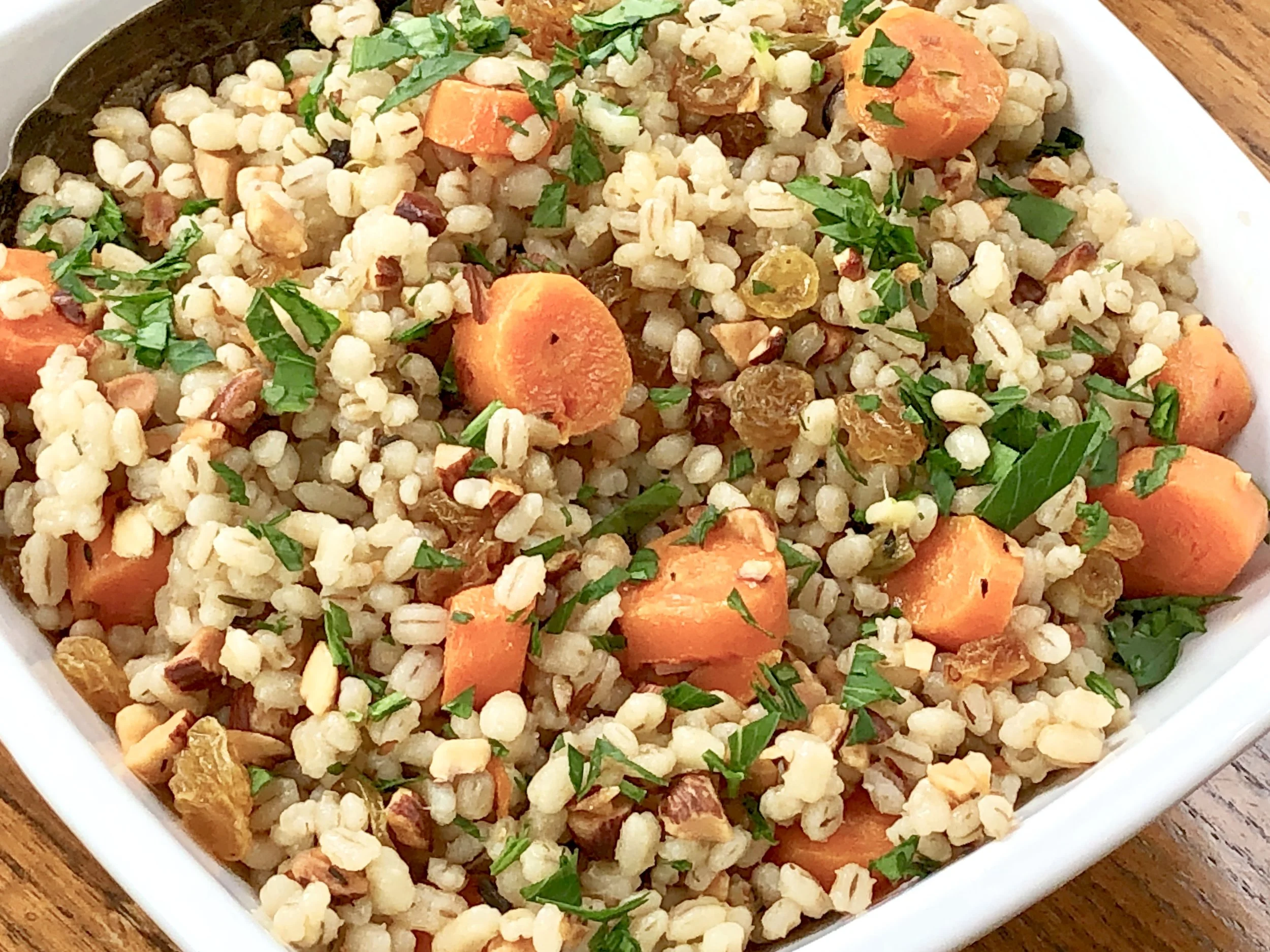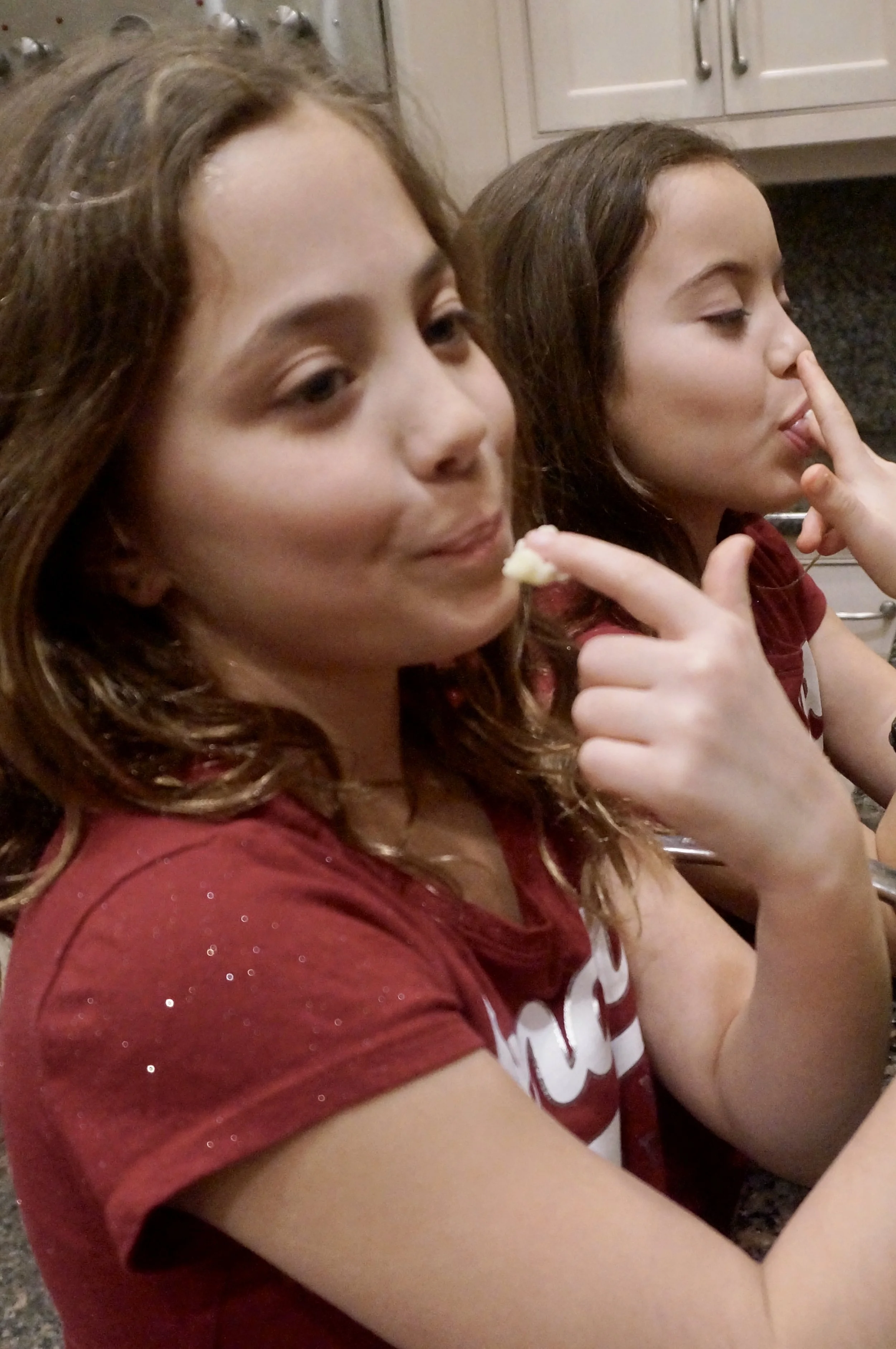My grandma made her own strudel dough. I remember how deftly she stretched and smoothed the paper-thin pastry over the kitchen table before filling it with all sorts of stuff: usually apples, tender and tart, but gently sweetened and seasoned with cinnamon. Sometimes she filled the dough with mashed potatoes bound with shmaltz-fried golden-brown onions. Like some giant knish!
Whatever was inside, those rolls baked to perfectly perfect crispy-crustedness and all was well with the world.
OY! Those were delicious days.
When she got older she bought packaged strudel dough at a Hungarian grocery near her house. She just couldn’t manage preparing this most delicate of doughs anymore.
I’ve looked for real Hungarian strudel dough but it’s difficult to find. So I made my own dough once. It was good, but not worth the work! So, when I make strudel now I use phyllo dough, which is not quite the same thing and is a terrific product, but not exactly right for strudel.
Anyway, I thought of all this because National Apple Strudel Day is Monday, June 17th. And I thought about making some, but decided to make Apple Streusel instead.
They sound almost the same, right?
And it tastes just perfectly perfect.
Apple Streusel
5-6 baking type apples, peeled, cored and sliced
2 tablespoons lemon juice
1 tablespoon all-purpose flour
3/4 teaspoon cinnamon
1/3 cup sugar
streusel
Streusel:
3/4 cup all-purpose flour
1/4 cup oats (any kind)
3 tablespoons sugar
1/8 teaspoon salt
6 tablespoons butter, cut into chunks
Preheat the oven to 375 degrees. Place the apple slices in a bowl. Add the flour, lemon juice, flour, cinnamon and sugar, toss the ingredients and set aside. Spoon the streusel mixture on top of the apples. Bake for 45 minutes or until crusty and golden brown.
Combine the flour, oats, sugar and salt in a mixing bowl. Add the butter and work it into the flour mixture with fingers or a pastry blender, until the mixture resembles crumbs. (You can use a food processor: 24-30 short, quick pulses. If so, if you use quick oats, stir them in to the flour crumbs after pulsing.)
Makes 8 servings
